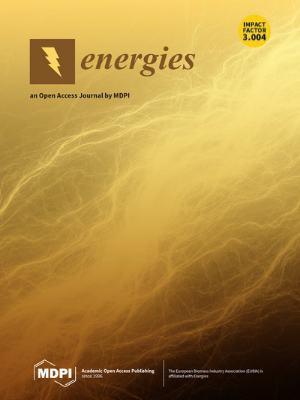Fault Diagnosis for PV Modules Based on AlexNet and Symmetrized Dot Pattern
IF 3
4区 工程技术
Q3 ENERGY & FUELS
引用次数: 0
Abstract
Faults in solar photovoltaic (PV) modules often result from component damage, leading to voltage fluctuations and decreased stability in the power system. In this study, the original voltage signals of different PV modules show little variation. Therefore, a solution that combines symmetrized dot pattern (SDP) and AlexNet for fault detection in PV modules was proposed. This solution investigates three common faults: poor welding, cracking, and bypass diode failure, which can be applied to fault-free modules. First, a high-frequency signal was input into the PV module, and the raw signal was captured using an NI PXI-5105 high-speed data acquisition card. Next, we used SDP to process the signal and create images with specific snowflake-like features. These images were used as a basis for fault diagnosis. Finally, deep-learning algorithms were used to perform status detection on the PV module. This research also used 3200 training samples and 800 test samples (200 for each type) to evaluate a new method for diagnosing faults in PV modules. The results show that the accuracy of the new method reached 99.8%, surpassing traditional convolutional neural networks (CNN) and extension neural networks (ENN), whose accuracies were 99.5% and 91.75%, respectively. Furthermore, this study compares the proposed method with more traditional numerical fault diagnosis methods. SDP effectively extracts fault signals and presents them as images. With AlexNet used for fault identification, the method excels in accuracy, training time, and testing time, thereby enhancing the stability and reliability of future energy systems.基于AlexNet和对称点图的光伏组件故障诊断
太阳能光伏(PV)组件的故障通常是由组件损坏引起的,从而导致电压波动和电力系统稳定性下降。在本研究中,不同光伏组件的原始电压信号变化不大。为此,提出了一种结合对称点图(SDP)和AlexNet的光伏组件故障检测方案。该解决方案研究了三种常见故障:焊接不良、开裂和旁路二极管故障,可应用于无故障模块。首先,向PV模块输入高频信号,使用NI PXI-5105高速数据采集卡捕获原始信号。接下来,我们使用SDP处理信号并创建具有特定雪花特征的图像。这些图像被用作故障诊断的基础。最后,利用深度学习算法对光伏模块进行状态检测。本研究还使用3200个训练样本和800个测试样本(每种200个)来评估一种新的光伏组件故障诊断方法。结果表明,新方法的准确率达到99.8%,超过了传统卷积神经网络(CNN)和扩展神经网络(ENN)的准确率分别为99.5%和91.75%。并将该方法与传统的数值故障诊断方法进行了比较。SDP能够有效地提取故障信号并将其以图像的形式呈现。该方法使用AlexNet进行故障识别,在准确率、训练时间和测试时间方面具有优势,从而增强了未来能源系统的稳定性和可靠性。
本文章由计算机程序翻译,如有差异,请以英文原文为准。
求助全文
约1分钟内获得全文
求助全文
来源期刊

Energies
ENERGY & FUELS-
CiteScore
6.20
自引率
21.90%
发文量
8045
审稿时长
1.9 months
期刊介绍:
Energies (ISSN 1996-1073) is an open access journal of related scientific research, technology development and policy and management studies. It publishes reviews, regular research papers, and communications. Our aim is to encourage scientists to publish their experimental and theoretical results in as much detail as possible. There is no restriction on the length of the papers. The full experimental details must be provided so that the results can be reproduced.
 求助内容:
求助内容: 应助结果提醒方式:
应助结果提醒方式:


